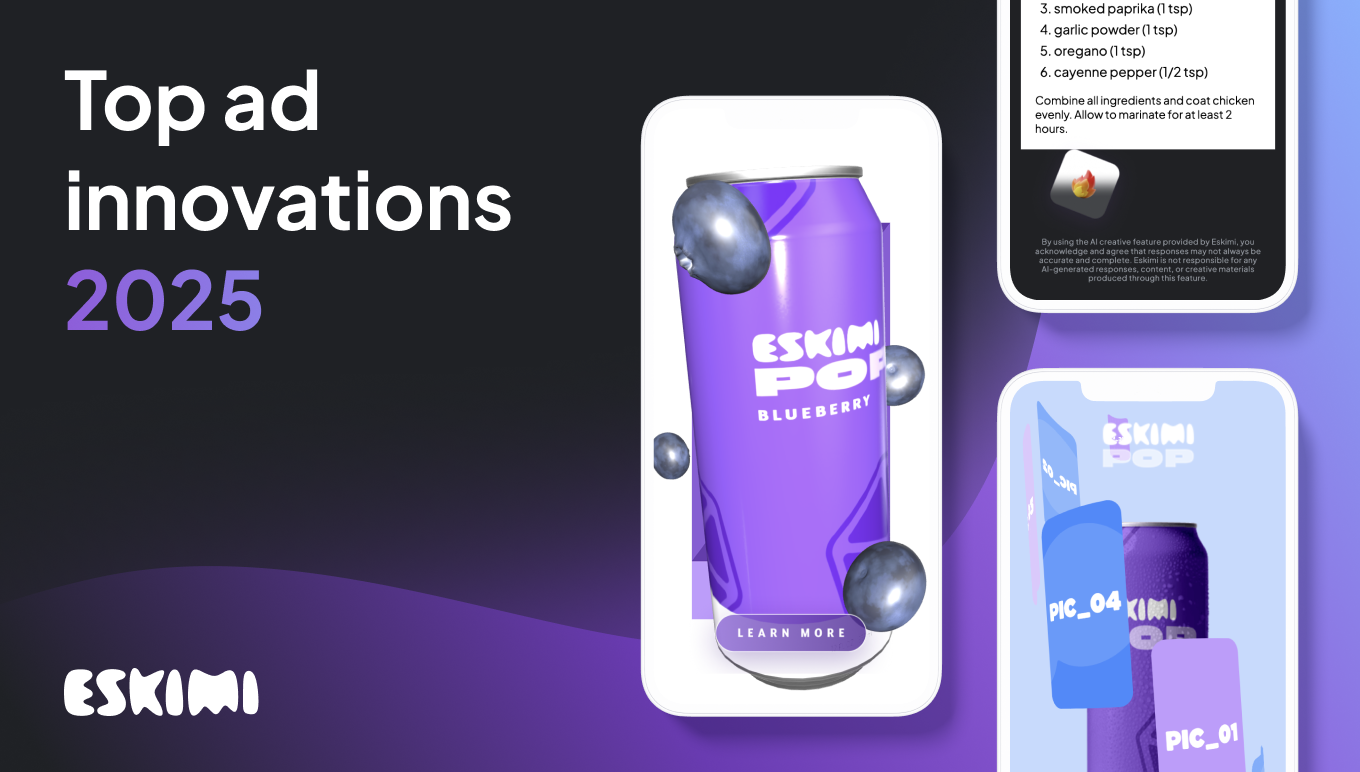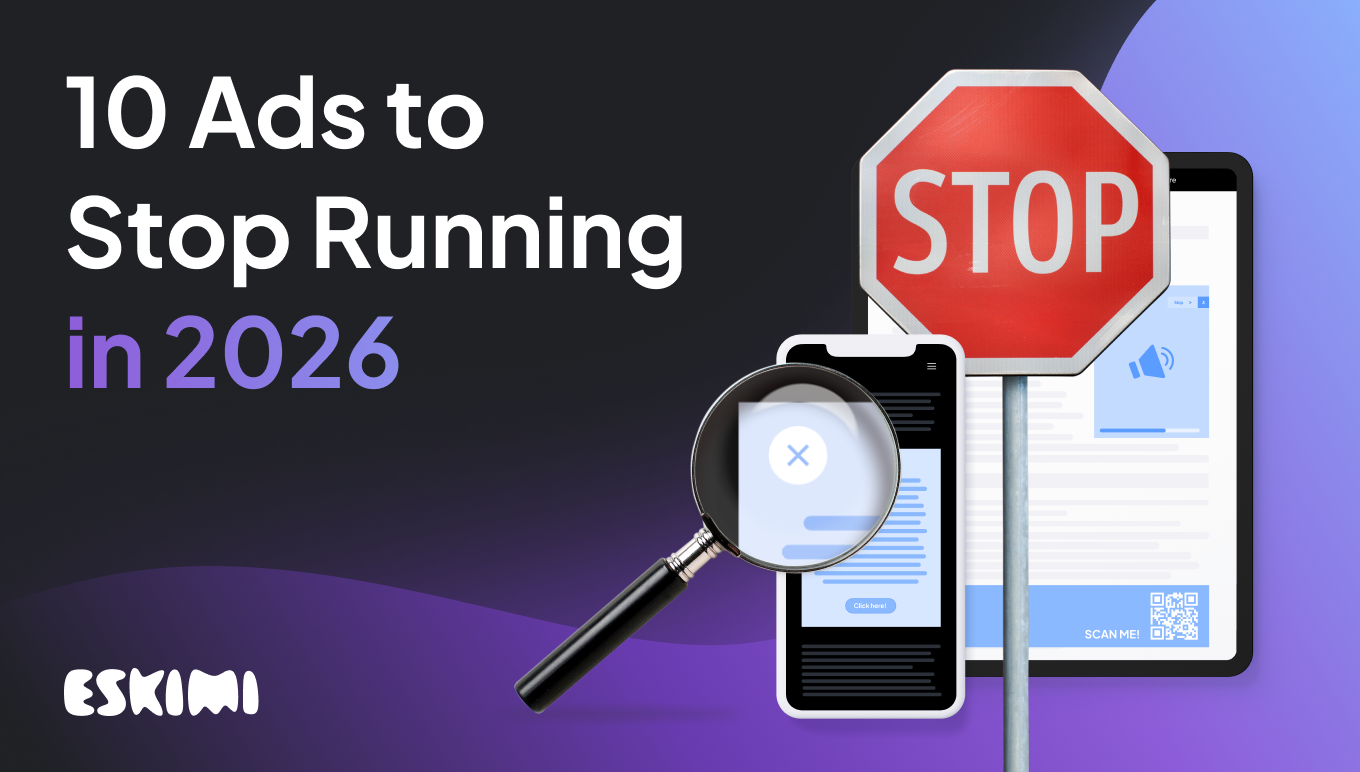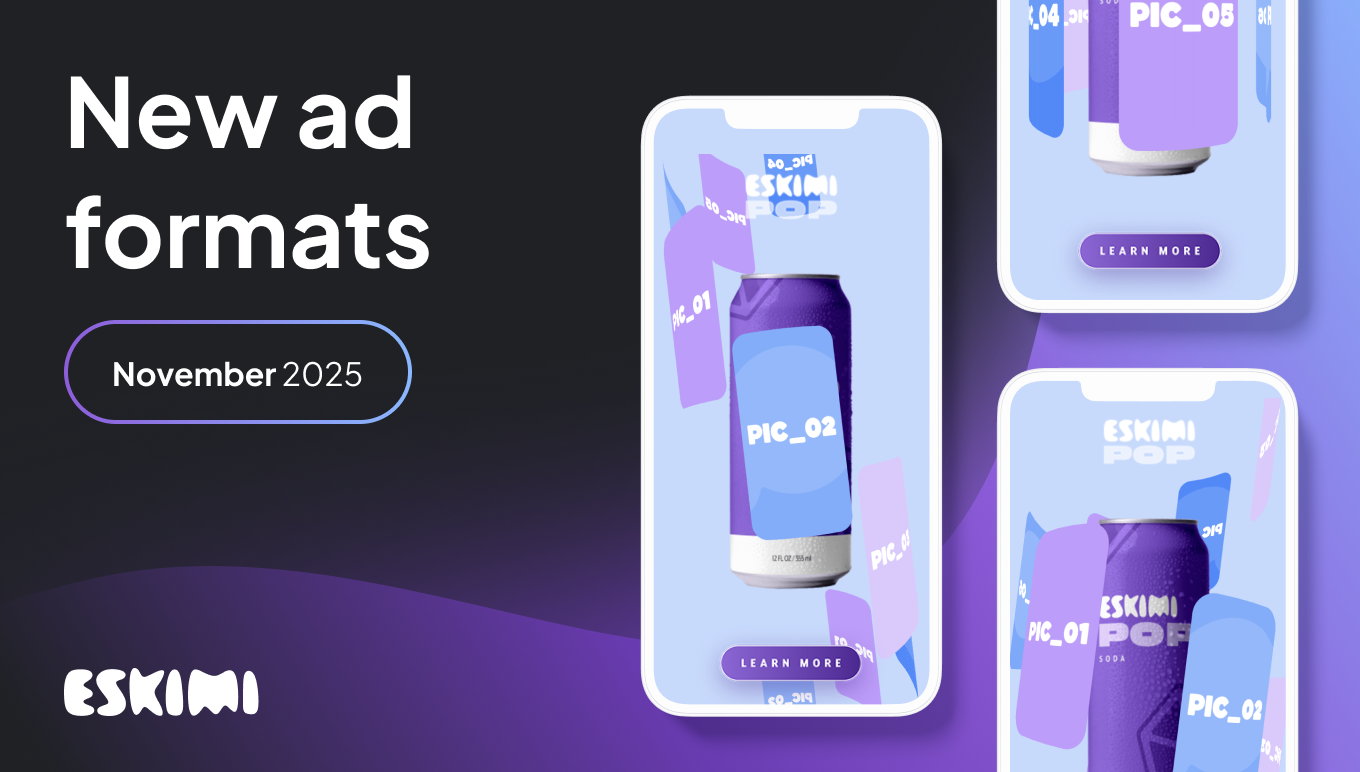Brand Metrics: The 8 Key Categories to Measure Success

Branding is all about making customers want, trust, and spend money on your product or service. Yet, even the best brand marketers often find it tough to show exactly how their efforts impact company revenue.
In today’s data-driven world, it’s crucial to track and prove the effectiveness of your branding efforts. Brand metrics are measurable values that indicate how well your brand is performing in the market. They help you understand how your brand is perceived, if (and how much) it’s trusted, and how desired it is by consumers.
More importantly, these metrics guide your marketing strategies, highlight areas for improvement, and ensure your brand stays aligned with consumer expectations.
In this article, we’ll look into these key categories of brand metrics:
- Brand Consideration Metrics
- Brand Health Metrics
- Brand Awareness Metrics
- Brand Equity Metrics
- Share of Voice Metrics
- Brand Perception Metrics
- Brand Lift Study Metrics
- Brand Tracking Metrics
Brand Consideration Metrics

Brand consideration metrics gauge how likely consumers are to consider your brand when making a purchase decision. These metrics show how well your brand resonates with your target audience and can guide your marketing strategies to better align with their needs and preferences, ultimately driving higher conversion rates.
Key Metrics
- Survey responses: Collecting direct feedback on whether consumers would consider your brand for their next purchase.
- Search queries: Monitoring how often your brand is searched online compared to competitors.
- Social media mentions: Tracking discussions and mentions of your brand on social media platforms.
How to Measure
Surveys: Use tools like SurveyMonkey or Typeform to create and distribute surveys. Ask questions like:
- "How likely are you to consider our brand for your next purchase?"
- "Which factors influence your decision to choose our brand over competitors?"
Focus groups: Gather a small, diverse group to discuss their thoughts and feelings about your brand. Sample questions include:
- "What comes to mind when you think of our brand?"
- "What would make you choose our brand over others?"
Search queries: Track branded queries using tools like Google Trends or Ahrefs to see how often your brand is considered alongside competitors. Compare your brand’s search volume against competitors.
Let’s take the old but gold example – Coca-Cola vs Pepsi. Here’s how “coca cola” keyword stats look like in Ahrefs:

And here’s for “pepsi”:

Also, look for keywords like "[your brand] vs [competitor]" that indicate potential consumers already know your brand and consider it as an option.
Social media mentions: Use tools like Brandwatch or Mention to analyze the frequency and context of mentions across platforms to get insights into consumer consideration and engagement.
Brand Health Metrics

Brand health metrics offer a comprehensive view of your brand's performance and perception in the market. Understanding these metrics helps you identify strengths and weaknesses and thus guide and improve long-term brand positioning.
Key Metrics
- Net Promoter Score (NPS): Measuring customer loyalty and satisfaction by asking how likely they are to recommend your brand to others.
- Customer Satisfaction (CSAT): Assessing customer satisfaction through surveys and feedback forms.
- Brand sentiment: Analyzing the positive, negative, or neutral sentiments expressed about your brand online.
- Market share: Calculating the percentage of total sales in your industry attributable to your brand.
How to Measure
NPS: Use tools like Qualtrics or Typeform to create and distribute NPS surveys. Ask customers, "How likely are you to recommend our brand to a friend or colleague?”
Then, categorize responses into promoters, passives, and detractors (see the image below) to get an overall loyalty score.

To get more context out of NPS surveys, ask optional follow-up questions, like:
- “What could we do to improve?” or “Which of the following do we need to improve?” to detractors
- “What could we do to make it 9/10?” to passives
- “What did you like the most [product/service]?” to promoters
CSAT: Conduct CSAT surveys, in which customers rate their satisfaction with your product or service right after a purchase or interaction to capture timely feedback.
Brands often use a number scale (1-10) or emoji scale for these ratings. However, you can go the extra mile by using more descriptive, emotionally loaded words to better capture satisfaction levels, like Amazon does:

Brand sentiment: Use social listening tools like Hootsuite or Sprout Social to analyze online conversations about your brand. These tools categorize mentions as positive, negative, or neutral, giving you an overall sentiment score.


Market share: Calculate your market share by dividing your brand’s total sales by the total industry sales and multiplying by 100. Use reports from market research firms like Nielsen for comprehensive data. This helps you understand your brand’s position relative to competitors.

Brand Awareness Metrics

Brand awareness metrics assess how familiar consumers are with your brand, focusing on recognition and recall. These metrics help you understand how widespread your brand is and how effectively your marketing efforts increase visibility. High brand awareness is often the first step toward customer acquisition and loyalty.
Key Metrics
- Aided recall: Measuring how many people recognize your brand when prompted.
- Unaided recall: Assessing how many people can recall your brand without any prompts.
- Brand recognition: Indicating how familiar consumers are with your brand’s name, logo, and messaging.
- Brand impressions: Tracking the number of times your brand’s content is displayed, regardless of whether it’s clicked.
- Reach: Measuring the total number of unique individuals who see your brand’s content.
- Website traffic: Indicating the number of visitors to your website, reflecting brand interest and engagement.
How to Measure
Aided recall: Use surveys to show respondents a list of brands and ask which ones they recognize. For example, "Which of the following brands have you heard of?"

Unaided recall: Ask respondents to list brands they remember without any prompts. Say you’re a soft drinks brand. Example question would be:
"What brands come to mind when you think of soft drinks?"
Brand recognition: Use surveys and online tools to test consumer familiarity with your brand’s visual elements, such as logos and taglines. You can show a logo and ask:
"Which brand does this logo belong to?"
Brand impressions: Track using digital analytics tools like Google Search Console and social media insights (e.g., Facebook Insights, Instagram Insights) to see how often your content is displayed.

Reach: Measure by tracking the number of unique views your content receives through social media analytics like Facebook Insights or Instagram Insights.

Website traffic: Monitor using tools like Ahrefs or Google Analytics to track the number of visitors to your website, giving insights into brand interest and engagement.

Brand Equity Metrics

Brand equity metrics evaluate the overall value and strength of your brand in the market. They reflect consumer perceptions, brand strength, and overall financial performance. These metrics provide insights into the intangible value of your brand, impacting customer acquisition, retention, and profitability.
High brand equity leads to customer loyalty, premium pricing, and competitive advantage.
Key Metrics
- Brand loyalty: Measuring the likelihood of customers repeatedly choosing your brand over competitors.
- Net Promoter Score (NPS): Gauging customer willingness to recommend your brand to others.
- Customer Lifetime Value (CLV): Estimating the total revenue a business can expect from a single customer account throughout their relationship.
- Brand association: Reflecting the attributes, benefits, and values that consumers associate with your brand.
- Perceived quality: Indicating how consumers perceive the quality of your products or services compared to competitors.
How to Measure
Brand loyalty: Assess through repeat purchase rates and customer loyalty programs. Track the percentage of customers who make multiple purchases over a year using tools like Salesforce or HubSpot.
Net Promoter Score (NPS): As described in the Brand Health Metrics section, NPS is measured by asking customers how likely they are to recommend your brand on a scale from 0 to 10. Tools like Qualtrics, SurveyMonkey, or Typeform can help automate this process.
Customer Lifetime Value (CLV): Calculate by multiplying the average purchase value, purchase frequency, and customer lifespan. Use tools like Salesforce and Google Analytics to streamline this calculation.

Brand association: Measure through surveys that explore the attributes and benefits consumers link to your brand. Example questions include:
"What three words come to mind when you think of our brand?"
Tools like SurveyMonkey or Typeform are useful here.
Perceived quality: Gauge through customer feedback, online reviews, and comparisons with competitor products. Collect ratings from product review sites and compare them to competitors using tools like Brandwatch and Sprout Social.
Share of Voice Metrics

Share of Voice (SOV) metrics measure your brand’s presence and visibility compared to competitors within a specific market or industry. Understanding SOV helps you gauge the effectiveness of your marketing efforts, identify growth opportunities, and highlight areas where your brand may be underperforming.
Key Metrics
- Advertising Share of Voice: Percentage of total advertising activity your brand represents in the market.
- Media Share of Voice: Proportion of media mentions and coverage your brand receives compared to competitors.
- Social Share of Voice: Percentage of social media conversations about your brand relative to total industry discussions.
How to Measure
Advertising Share of Voice: Calculate by dividing your brand’s advertising spend by the total industry spend. Tools like Nielsen Ad Intel and Kantar Media provide the necessary data:

You can benchmark your current Advertising Share of Voice before launching a new campaign and measure the change after the campaign to evaluate its effectiveness.
Media Share of Voice: Assess by tracking the number of media mentions your brand receives compared to the total mentions for all brands in your market. Use tools like Meltwater and Cision to track and analyze media mentions. To assess impact, compare your Media Share of Voice before and after a PR event or product launch.

Social Share of Voice: Monitor by tracking hashtags, brand mentions, and engagement on platforms like Twitter, Facebook, and Instagram. Use social listening tools like Brandwatch, Hootsuite, and Sprout Social.

During a social media campaign, track engagement and mentions in real-time and adjust your strategy based on your Social Share of Voice compared to competitors.
Brand Perception Metrics

Brand perception metrics gauge how consumers view and feel about your brand, reflecting public attitudes, beliefs, and overall sentiment. These metrics influence purchasing decisions and brand loyalty, focusing on the qualitative aspects of your brand's image and values.
Positive brand perception often leads to increased customer loyalty, higher sales, and a competitive edge.
Key Metrics
- Net Promoter Score (NPS): Measuring customer loyalty and likelihood of recommending your brand.
- Customer Satisfaction (CSAT): Assessing customer happiness with your products or services.
- Brand sentiment: Evaluating the tone of conversations about your brand across various channels.
- Brand attributes: Tracking how well specific characteristics (e.g., innovation, quality, trustworthiness) are associated with your brand.
- Brand halo metrics: Measuring the positive impact that a successful product or campaign has on the perception and sales of other products within the brand. This is particularly relevant for brands with a broad product range and not applicable for those with a narrow focus or less interdependence between product lines.
How to Measure
NPS, CSAT, and Brand Sentiment Analysis: Refer to the Brand Health Metrics section for detailed measurement techniques.
Brand attributes: Measure through surveys where customers rate your brand on various traits.
For example, if you are a lifestyle brand, you might ask respondents to rate how well attributes like "trendy," "reliable," and "family-oriented" describe your brand on a scale from 1 to 5. Tools like Qualtrics and SurveyMonkey are excellent for conducting these detailed customer surveys.

Brand halo metrics:
- Sales data analysis: Track sales of related products before and after a major product launch or campaign to identify any positive trends. For example, if launching a new smartphone, monitor sales of accessories like cases and headphones.
- Consumer surveys: Ask customers if their perception of other products has improved after their experience with the new product. Questions could include, "Has your opinion of our other products changed after using our new release?" Use tools like Google Forms or SurveyMonkey.
- Social media listening: Use social listening tools like Brandwatch or Sprout Social to track mentions and sentiment changes regarding your brand as a whole following a successful campaign.
Brand Lift Study Metrics

Brand lift study metrics measure the direct impact of your advertising campaigns on consumer perceptions and behaviors. These metrics provide insights into how well your campaigns are driving brand awareness, consideration, favorability, and purchase intent.
Measuring these metrics helps assess the return on investment (ROI) of your marketing campaigns and refine your strategies for better results.
Key Metrics
- Ad recall: Measuring how well consumers remember seeing your ad.
- Brand awareness: Assessing any increases in awareness as a result of the campaign.
- Brand favorability: Evaluating changes in how favorably consumers view your brand after being exposed to the campaign.
- Purchase intent: Measuring the likelihood that consumers will buy your products or services following the campaign.
- Message association: Checking how well the audience associates your ad’s message with your brand.
How to Measure
Pre and post-surveys: Conduct surveys before and after the campaign to assess changes in consumer attitudes. Use tools like Google Surveys and Facebook Brand Lift to measure changes in brand perception, asking questions like "How aware are you of our brand?" and "How favorably do you view our brand after seeing our ad?"

Behavioral data analysis: Track shifts in consumer behavior and engagement metrics using analytics platforms like Google Analytics and Facebook Analytics. Monitor website visits, clicks, and other interactions during and after your campaign to see how consumer behavior changes.
A/B testing: Use A/B testing to compare different versions of your campaign. Run two versions of your ad campaign simultaneously and measure which version leads to higher ad recall, brand favorability, or purchase intent.
Brand Tracking Metrics

Brand tracking metrics monitor the performance and health of your brand over time. These metrics provide ongoing insights into brand awareness, perception, and engagement, helping you understand how your brand evolves in the long run and responds to marketing efforts and market changes.
Key Metrics
- Brand awareness: Tracking how well your brand is known among the target audience over time.
- Brand perception: Monitoring changes in how consumers feel about your brand.
- Purchase intent: Measuring the likelihood that consumers will buy your products or services.
- Customer loyalty: Assessing repeat purchase rates and brand advocacy.
- Market share: Tracking your brand's total market share over time.
How to Measure
Regular surveys: Conduct periodic surveys to track brand metrics. Use tools like SurveyMonkey, Qualtrics, and Google Surveys for automated survey distribution. For brand awareness, ask respondents if they are aware of your brand and how well they recognize it. For brand perception, use sentiment analysis and customer feedback surveys to track shifts in perception.
Refer to Brand Awareness Metrics and Brand Perception Metrics.
Sales data analysis: Monitor sales trends and market performance using CRM systems like Salesforce and HubSpot to track customer interactions, NPS scores, and repeat purchase behavior.
For purchase intent, gauge through surveys where consumers indicate their likelihood of buying your products or services. For customer loyalty, assess through metrics like repeat purchase and customer retention rates.
Market share: Calculate by comparing your sales to total market sales in your industry using industry reports and market research firms like Nielsen. Refer to the Brand Health Metrics section.
Brand health dashboards: Use dashboards to track and visualize key metrics. Tools like Google Looker Studio (formerly Google Data Studio) can help create comprehensive brand health dashboards.
How to Build an Effective Brand Metrics Dashboard
Tracking your brand metrics is key to knowing where your brand stands and is headed. Though consistently juggling across multiple platforms for different data points can be tricky.
You’ll want to build a dashboard with all key metrics in one place – so you can monitor and act on this data timely.
First, find the right tool to aggregate all your metrics – Looker Studio is a popular choice as it has plenty of integration capabilities and user-friendly interface. Plus, it offers a template gallery so you don’t need to build your dashboard from scratch.

Start by integrating data sources such as Google Analytics, social media insights, CRM systems, and survey tools.
Next, organize your data into sections for each metric category you’d like to track. Use charts, graphs, and tables to present data clearly. Basically, you need to customize your dashboard to focus on the metrics most relevant to your brand goals and industry.
Here’s an example of how a brand metrics dashboard could look like:

Finally, schedule automated reports so your dashboard doesn’t stay in the shadows while you work on your daily tasks. Remember to update data sources regularly so your report works as it should (and you plan your efforts as you should, as a result).
Level Up Your Advertising with Eskimi
- Reach 96% of Open Web
- 2,500+ Targeting Options
- 100% Managed or Self-Service
- In-House Creative Studio Team
- Display, Video, In-Game & CTV
- #1 Rated DSP on G2





